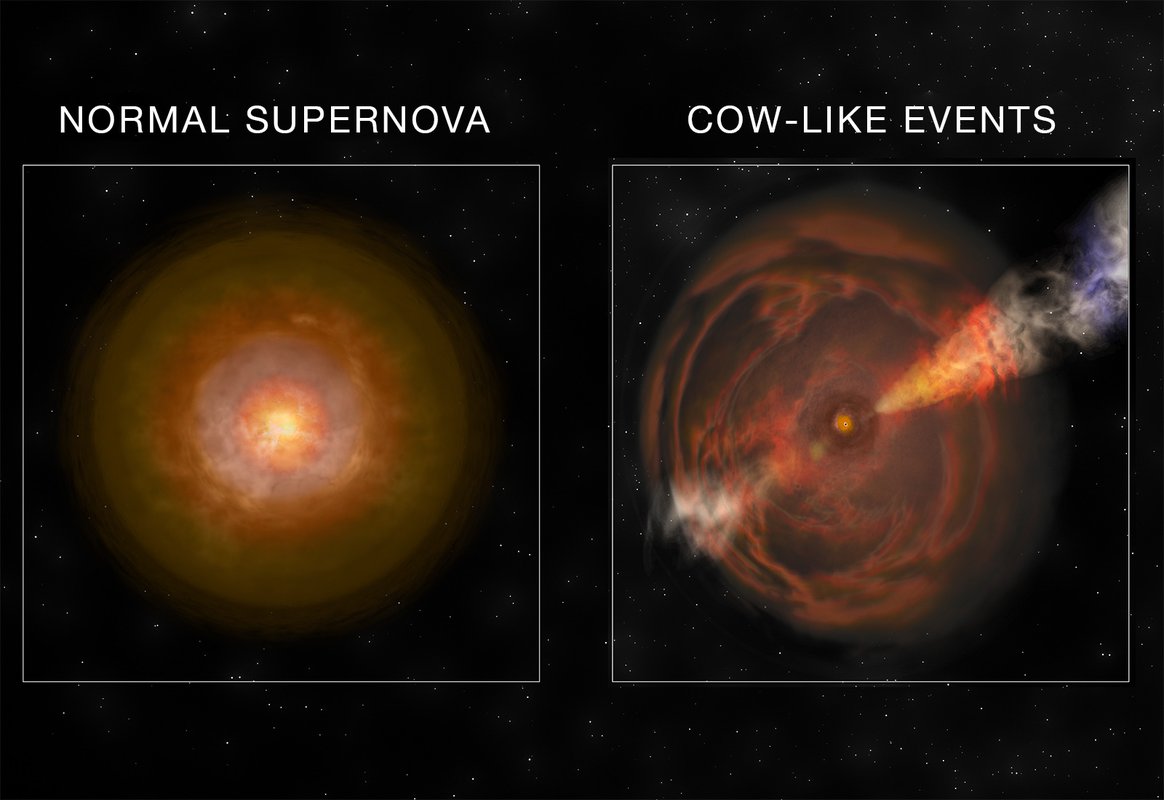 HEAPOW: Aspherical COWs? (2022 Jan 17)
HEAPOW: Aspherical COWs? (2022 Jan 17)
In 2018, a strange sort of supernova was captured by telescopes around the world. This transient event, dubbed AT2018cow by odd astronomical naming conventions, was a rare event now known as a Fast Blue Optical Transient (or FBOT). Astronomers realized that the "cow" event was orders of magnitude more luminous than other more typical supernovae usually seen in the cosmic barnyard. Astronomers have not yet agreed on what AT2018cow is (or was). It's perhaps likely that the enormous outpouring of energy from the "cow" is being produced by directed beams of radiation from a compact object created by the death and collapse of a high mass star once the star ran out of thermonuclear fuel. The image above shows two possibilities. On the left, energy is beamed towards earth by a baby black hole at the center of supernova remnant. In this scenario, the directed energy beam is powered by the accretion of a disk of matter falling back onto the event horizon of a newborn baby black hole. The scenario shown on the right also has a directed energetic beam, but this time powered by the magnetic energy of a highly magnetized neutron star, or magnetar, left behind by the supernova. Astronomers are on the hunt for more such events to see if they can figure out if either scenario is correct. In 2020, a new X-ray transient source was found by the eROSITA X-ray telescope on the Russian-German Spektr-RG X-ray space observatory. This source was also detected as an FBOT by the telescopes of the Zwicky Transient Facility and dubbed AT2020mrf. Astronomers now know that the AT2020mrf explosion took place in a small star forming galaxy about 2 billion lightyears away, and saw that, astoundingly, this "cow-like" event is even brighter than the original "cow" - 10 to 100 times brighter in X-rays. Additional observations of "mrf" and the "cow", and new FBOTs, will help refine our understandings of stellar death and the birth pangs of neutron stars and black holes.
AAS: AT2020mrf: The Most X-ray Luminous Cow-like Supernova
| << Previous HEAPOW | High Energy Astrophysics Picture of the Week | Next HEAPOW >> |

